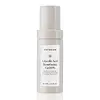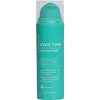What's inside
What's inside
 Key Ingredients
Key Ingredients

 Benefits
Benefits

 Concerns
Concerns

 Ingredients Side-by-side
Ingredients Side-by-side

Water
Skin ConditioningGlycolic Acid
BufferingPropanediol
SolventSodium Hydroxide
BufferingGlycerin
HumectantPolyacrylate Crosspolymer-11
Emulsion StabilisingVaccinium Myrtillus Fruit/Leaf Extract
AstringentSaccharum Officinarum Extract
MoisturisingCitrus Aurantium Dulcis Fruit Extract
MaskingCitrus Limon Fruit Extract
MaskingAcer Saccharum Extract
Skin ConditioningMicrocitrus Australis Fruit Extract
Skin ConditioningSodium Hyaluronate
HumectantHydroxyacetophenone
AntioxidantPhenoxyethanol
PreservativeHydroxyethylcellulose
Emulsion StabilisingTocopheryl Acetate
AntioxidantEthylhexylglycerin
Skin ConditioningDisodium EDTA
Tocopherol
AntioxidantWater, Glycolic Acid, Propanediol, Sodium Hydroxide, Glycerin, Polyacrylate Crosspolymer-11, Vaccinium Myrtillus Fruit/Leaf Extract, Saccharum Officinarum Extract, Citrus Aurantium Dulcis Fruit Extract, Citrus Limon Fruit Extract, Acer Saccharum Extract, Microcitrus Australis Fruit Extract, Sodium Hyaluronate, Hydroxyacetophenone, Phenoxyethanol, Hydroxyethylcellulose, Tocopheryl Acetate, Ethylhexylglycerin, Disodium EDTA, Tocopherol
Water
Skin ConditioningGlycerin
HumectantPolysorbate 60
EmulsifyingLactic Acid
BufferingGlycolic Acid
BufferingSodium Hydroxide
BufferingPvp
Emulsion StabilisingHydroxystearic/Linolenic/Oleic Polyglycerides
EmollientKojic Acid
AntioxidantNiacinamide
SmoothingHelianthus Annuus Seed Oil
EmollientHydroxyacetophenone
AntioxidantXanthan Gum
EmulsifyingCamellia Sinensis Leaf Extract
Antimicrobial1,2-Hexanediol
Skin ConditioningCaprylyl Glycol
EmollientRicinus Communis Seed Oil
MaskingSclerotium Gum
Emulsion StabilisingLecithin
EmollientPullulan
Ammonium Acryloyldimethyltaurate/Vp Copolymer
Citrus Aurantium Dulcis Peel Oil
MaskingCaprylic/Capric Triglyceride
MaskingGlycine Soja Oil
EmollientArctostaphylos Uva Ursi Leaf Extract
Skin ConditioningTocopherol
AntioxidantSodium Hyaluronate
HumectantCitrus Limon Juice
Skin ConditioningTetrahexyldecyl Ascorbate
AntioxidantRetinyl Palmitate
Skin ConditioningLactobacillus/Papaya Fruit Ferment Extract
AbrasiveBixa Orellana Seed Oil
EmollientCarica Papaya Seed Oil
HumectantAlpha-Arbutin
AntioxidantGlutathione
Azelaic Acid
BufferingMorus Alba Leaf Extract
Skin ConditioningOligopeptide-51
Skin ConditioningWater, Glycerin, Polysorbate 60, Lactic Acid, Glycolic Acid, Sodium Hydroxide, Pvp, Hydroxystearic/Linolenic/Oleic Polyglycerides, Kojic Acid, Niacinamide, Helianthus Annuus Seed Oil, Hydroxyacetophenone, Xanthan Gum, Camellia Sinensis Leaf Extract, 1,2-Hexanediol, Caprylyl Glycol, Ricinus Communis Seed Oil, Sclerotium Gum, Lecithin, Pullulan, Ammonium Acryloyldimethyltaurate/Vp Copolymer, Citrus Aurantium Dulcis Peel Oil, Caprylic/Capric Triglyceride, Glycine Soja Oil, Arctostaphylos Uva Ursi Leaf Extract, Tocopherol, Sodium Hyaluronate, Citrus Limon Juice, Tetrahexyldecyl Ascorbate, Retinyl Palmitate, Lactobacillus/Papaya Fruit Ferment Extract, Bixa Orellana Seed Oil, Carica Papaya Seed Oil, Alpha-Arbutin, Glutathione, Azelaic Acid, Morus Alba Leaf Extract, Oligopeptide-51
Alternatives
Ingredients Explained
These ingredients are found in both products.
Ingredients higher up in an ingredient list are typically present in a larger amount.
Glycerin is already naturally found in your skin. It helps moisturize and protect your skin.
A study from 2016 found glycerin to be more effective as a humectant than AHAs and hyaluronic acid.
As a humectant, it helps the skin stay hydrated by pulling moisture to your skin. The low molecular weight of glycerin allows it to pull moisture into the deeper layers of your skin.
Hydrated skin improves your skin barrier; Your skin barrier helps protect against irritants and bacteria.
Glycerin has also been found to have antimicrobial and antiviral properties. Due to these properties, glycerin is often used in wound and burn treatments.
In cosmetics, glycerin is usually derived from plants such as soybean or palm. However, it can also be sourced from animals, such as tallow or animal fat.
This ingredient is organic, colorless, odorless, and non-toxic.
Glycerin is the name for this ingredient in American English. British English uses Glycerol/Glycerine.
Learn more about GlycerinGlycolic Acid is arguably the most famous alpha hydroxy acid (AHA) with tons of research backing its benefits.
It is found naturally in sugar cane but the form used in skincare is usually synthetic for purity and stability.
Glycolic acid removes the top layer of dead skin cells to allow newer and fresher ones to emerge.
AHAs work by breaking down the structural “glue” that holds old skin cells in place. When that buildup is gone, your skin can renew itself more efficiently.
Research also shows glycolic acid stimulates collagen production, helping to firm and thicken the skin over time. This is one of its biggest advantages over other AHAs.
Overall, glycolic acid helps with:
Fun fact: Glycolic acid boosts skin hydration by helping it produce molecules that increase hyaluronic acid naturally.
To work best, glycolic acid products should have a pH between 3-4 (that’s where exfoliation is most effective but still gentle on skin).
The pH and concentration of a product are key to its effectiveness:
It is normal to feel a slight stinging sensation when using glycolic acid. This usually fades as your skin adjusts.
Because glycolic acid has the smallest molecular size in the AHA family, it can penetrate deeper, which enhances its effectiveness but also makes it more likely to irritate sensitive skin.
If your skin is very sensitive or prone to rosacea, glycolic acid may be too strong; in that case, try milder options like lactic acid or a PHA instead.
Recent studies suggest glycolic acid might even help protect against UV damage. But don’t skip sunscreen! Freshly exfoliated skin is more sensitive to the sun.
Glycolic acid is a skincare superstar. It smooths, brightens, hydrates, and firms the skin. Unless you’re highly sensitive, it’s well worth adding to your routine.
Read more about some other popular AHA's here:
Learn more about Glycolic AcidHydroxyacetophenone is antioxidant with skin conditioning and soothing properties. It also boosts the efficiency of preservatives.
This ingredient is not irritating or sensitizing.
Sodium Hyaluronate is hyaluronic acid's salt form. It is commonly derived from the sodium salt of hyaluronic acid.
Like hyaluronic acid, it is great at holding water and acts as a humectant. This makes it a great skin hydrating ingredient.
Sodium Hyaluronate is naturally occurring in our bodies and is mostly found in eye fluid and joints.
These are some other common types of Hyaluronic Acid:
Learn more about Sodium HyaluronateSodium Hydroxide is also known as lye or caustic soda. It is used to adjust the pH of products; many ingredients require a specific pH to be effective.
In small amounts, sodium hydroxide is considered safe to use. However, large amounts may cause chemical burns due to its high alkaline.
Your skin has a natural pH and acid mantle. This acid mantle helps prevent harmful bacteria from breaking through. The acid mantle also helps keep your skin hydrated.
"Alkaline" refers to a high pH level. A low pH level would be considered acidic.
Learn more about Sodium HydroxideTocopherol (also known as Vitamin E) is a common antioxidant used to help protect the skin from free-radicals and strengthen the skin barrier. It's also fat soluble - this means our skin is great at absorbing it.
Vitamin E also helps keep your natural skin lipids healthy. Your lipid skin barrier naturally consists of lipids, ceramides, and fatty acids. Vitamin E offers extra protection for your skin’s lipid barrier, keeping your skin healthy and nourished.
Another benefit is a bit of UV protection. Vitamin E helps reduce the damage caused by UVB rays. (It should not replace your sunscreen). Combining it with Vitamin C can decrease sunburned cells and hyperpigmentation after UV exposure.
You might have noticed Vitamin E + C often paired together. This is because it is great at stabilizing Vitamin C. Using the two together helps increase the effectiveness of both ingredients.
There are often claims that Vitamin E can reduce/prevent scarring, but these claims haven't been confirmed by scientific research.
Learn more about TocopherolWater. It's the most common cosmetic ingredient of all. You'll usually see it at the top of ingredient lists, meaning that it makes up the largest part of the product.
So why is it so popular? Water most often acts as a solvent - this means that it helps dissolve other ingredients into the formulation.
You'll also recognize water as that liquid we all need to stay alive. If you see this, drink a glass of water. Stay hydrated!
Learn more about Water